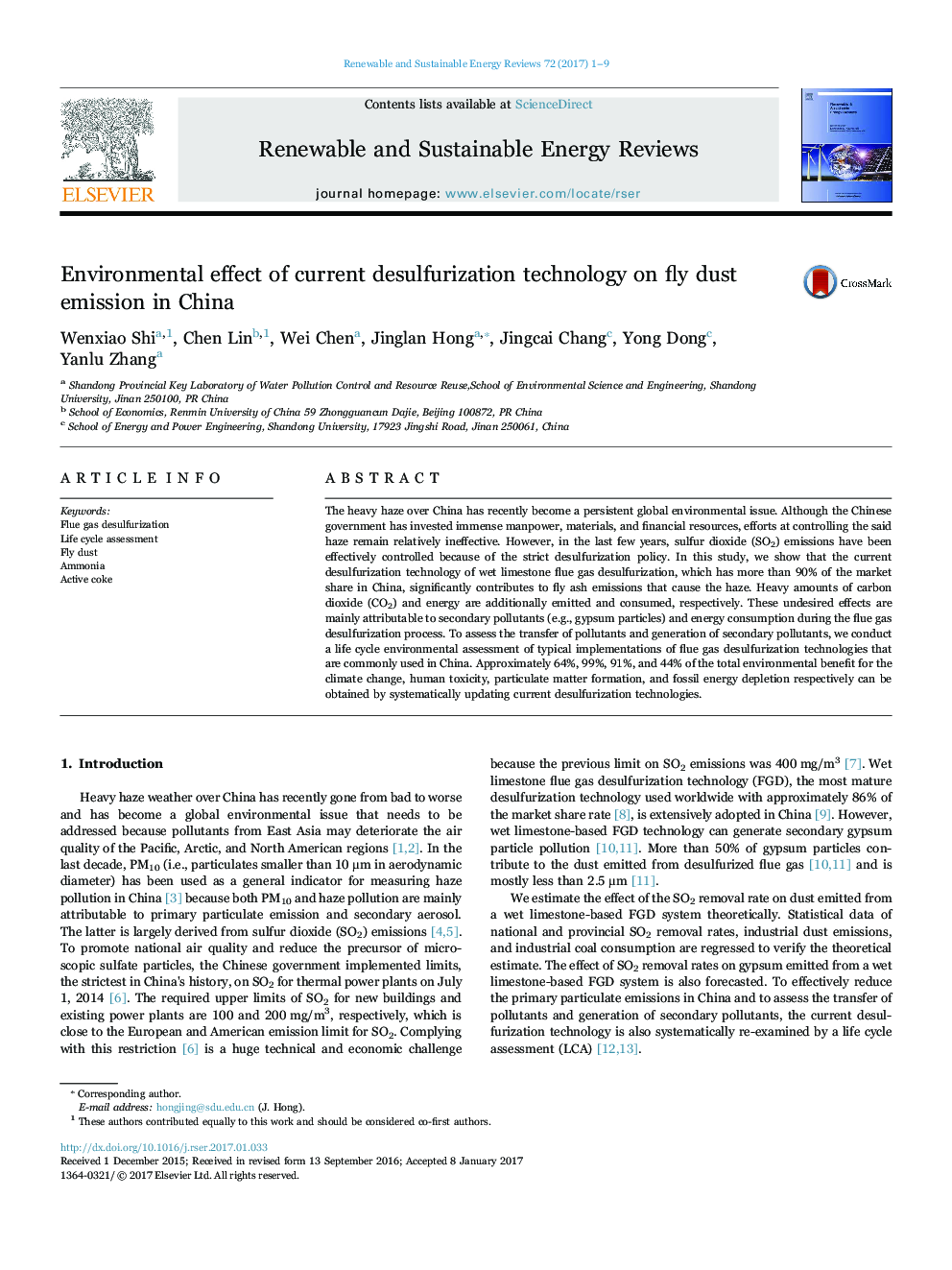| Article ID | Journal | Published Year | Pages | File Type |
|---|---|---|---|---|
| 5482343 | Renewable and Sustainable Energy Reviews | 2017 | 9 Pages |
Abstract
The heavy haze over China has recently become a persistent global environmental issue. Although the Chinese government has invested immense manpower, materials, and financial resources, efforts at controlling the said haze remain relatively ineffective. However, in the last few years, sulfur dioxide (SO2) emissions have been effectively controlled because of the strict desulfurization policy. In this study, we show that the current desulfurization technology of wet limestone flue gas desulfurization, which has more than 90% of the market share in China, significantly contributes to fly ash emissions that cause the haze. Heavy amounts of carbon dioxide (CO2) and energy are additionally emitted and consumed, respectively. These undesired effects are mainly attributable to secondary pollutants (e.g., gypsum particles) and energy consumption during the flue gas desulfurization process. To assess the transfer of pollutants and generation of secondary pollutants, we conduct a life cycle environmental assessment of typical implementations of flue gas desulfurization technologies that are commonly used in China. Approximately 64%, 99%, 91%, and 44% of the total environmental benefit for the climate change, human toxicity, particulate matter formation, and fossil energy depletion respectively can be obtained by systematically updating current desulfurization technologies.
Related Topics
Physical Sciences and Engineering
Energy
Renewable Energy, Sustainability and the Environment
Authors
Wenxiao Shi, Chen Lin, Wei Chen, Jinglan Hong, Jingcai Chang, Yong Dong, Yanlu Zhang,
